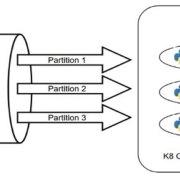The dreaded part of every site reliability engineer’s (SRE) job eventually: capacity planning. You know, the dance between all the stakeholders when deploying your applications. Did engineering really simulate the right load and do we understand how the application scales? Did product managers accurately estimate the amount of usage? Did we make architectural decisions that will keep us from meeting our SLA goals? And then the question that everyone will have to answer eventually: how much is this going to cost? This forces SREs to assume the roles of engineer, accountant, and fortune teller.
The large cloud providers understood this a long time ago and so the term “cloud economics” was coined. Essentially this means: rent everything and only pay for what you need. I would say this message worked because we all love some cloud. It’s not a fad either. SREs can eliminate a lot of the downside when the initial infrastructure capacity discussion was maybe a little off. Being wrong is no longer devastating. Just add more of what you need and in the best cases, the services scale themselves — giving everyone a nice night’s sleep. All this without provisioning a server, which gave rise to the term “serverless.”










